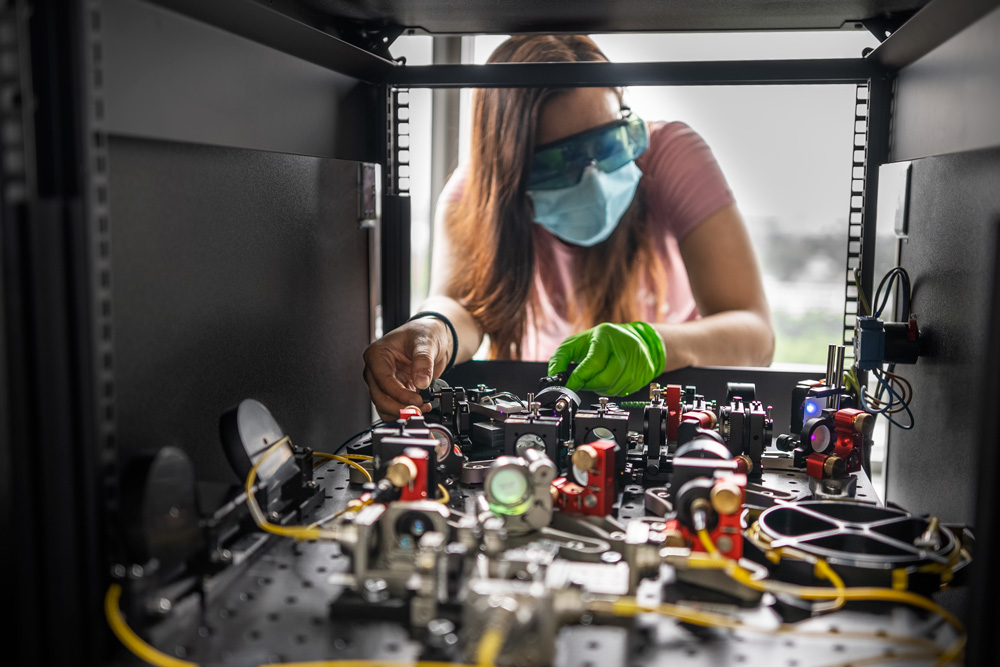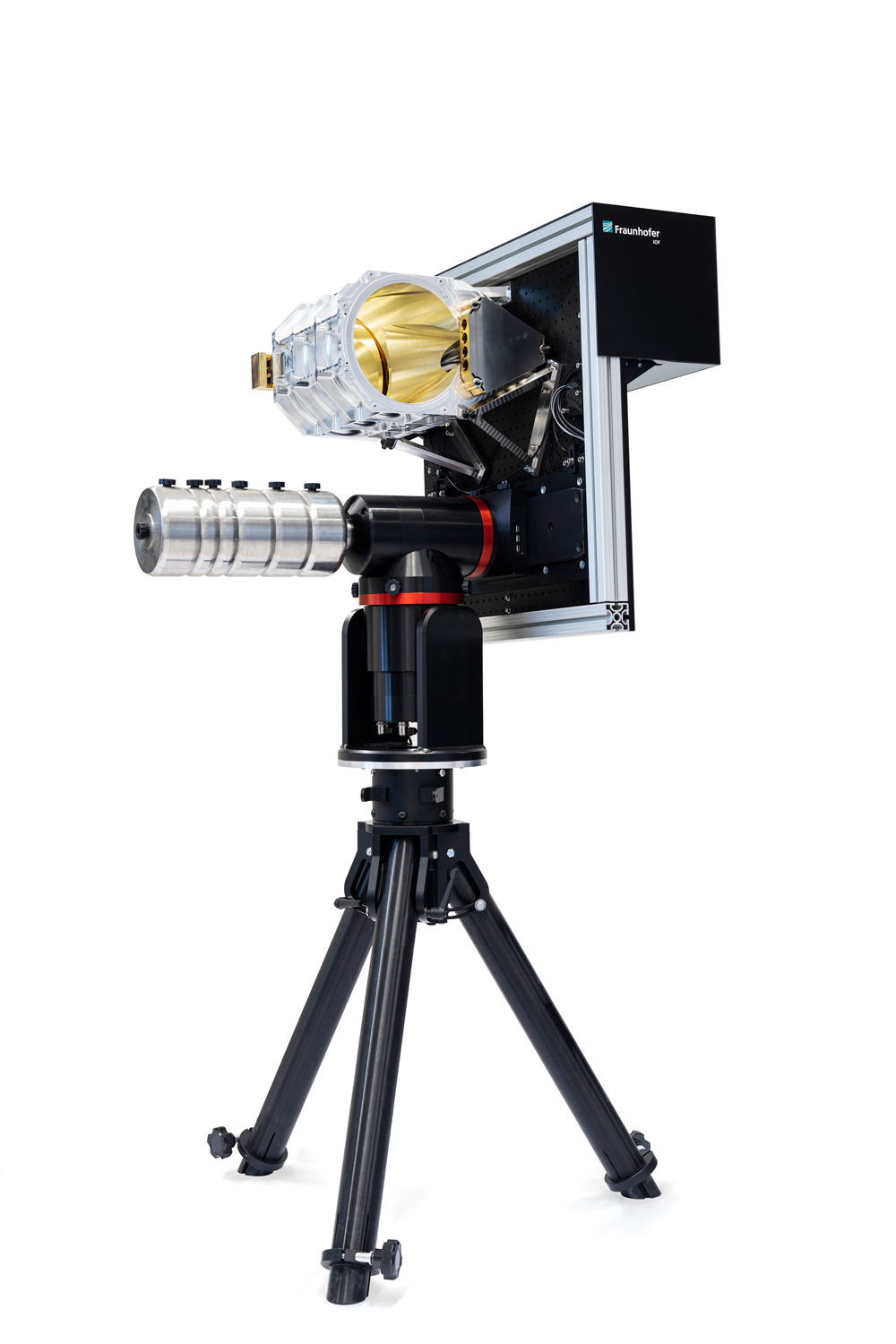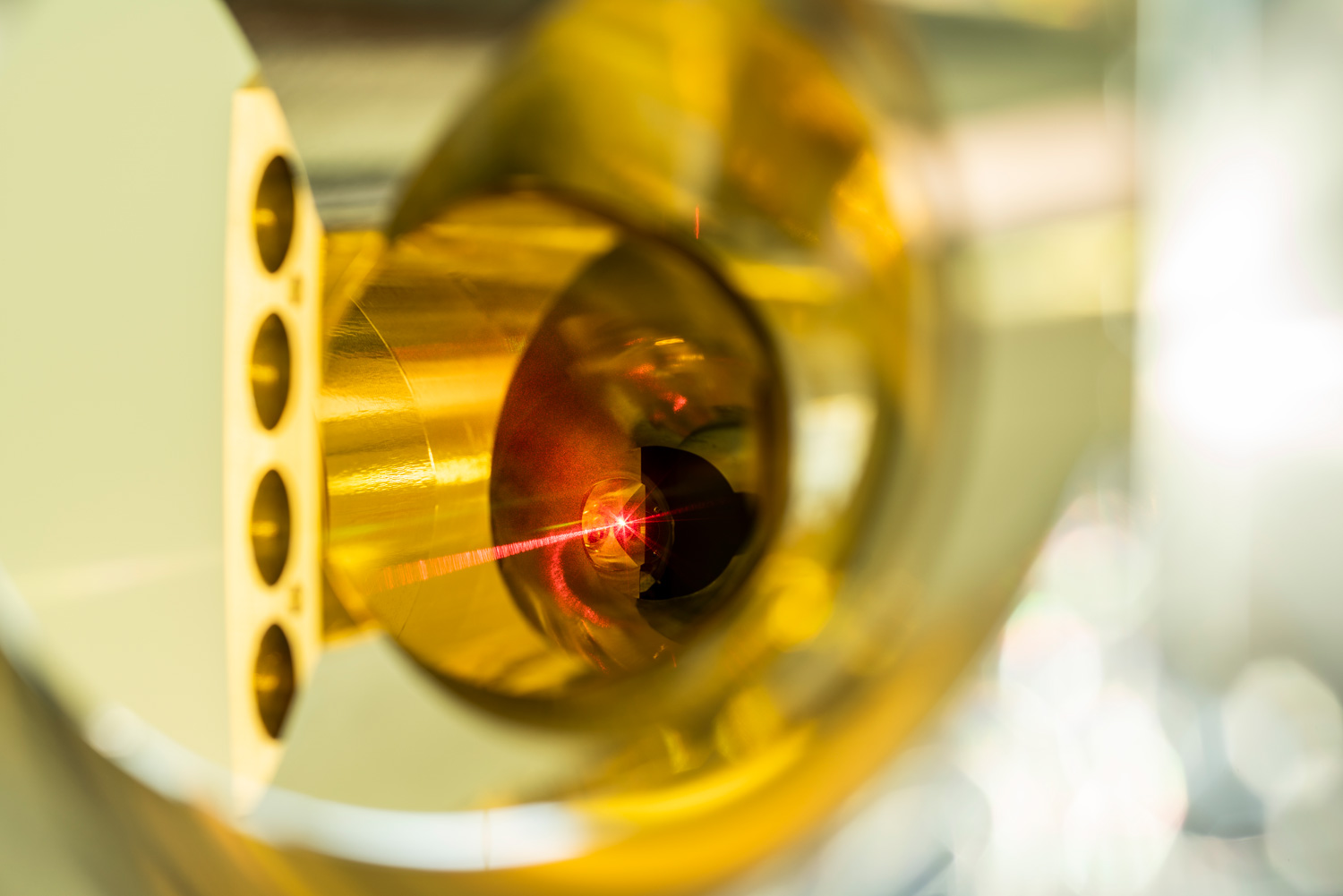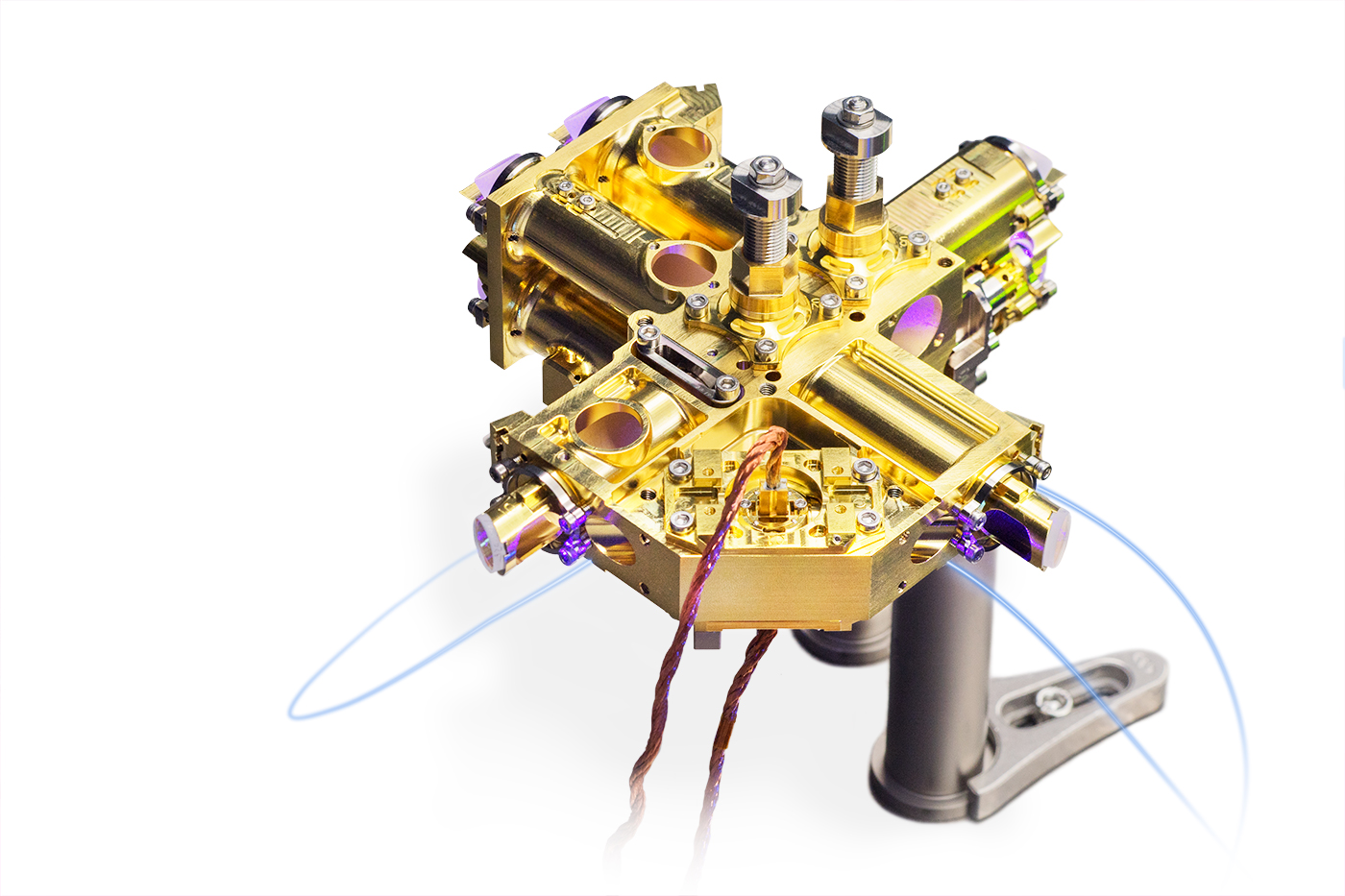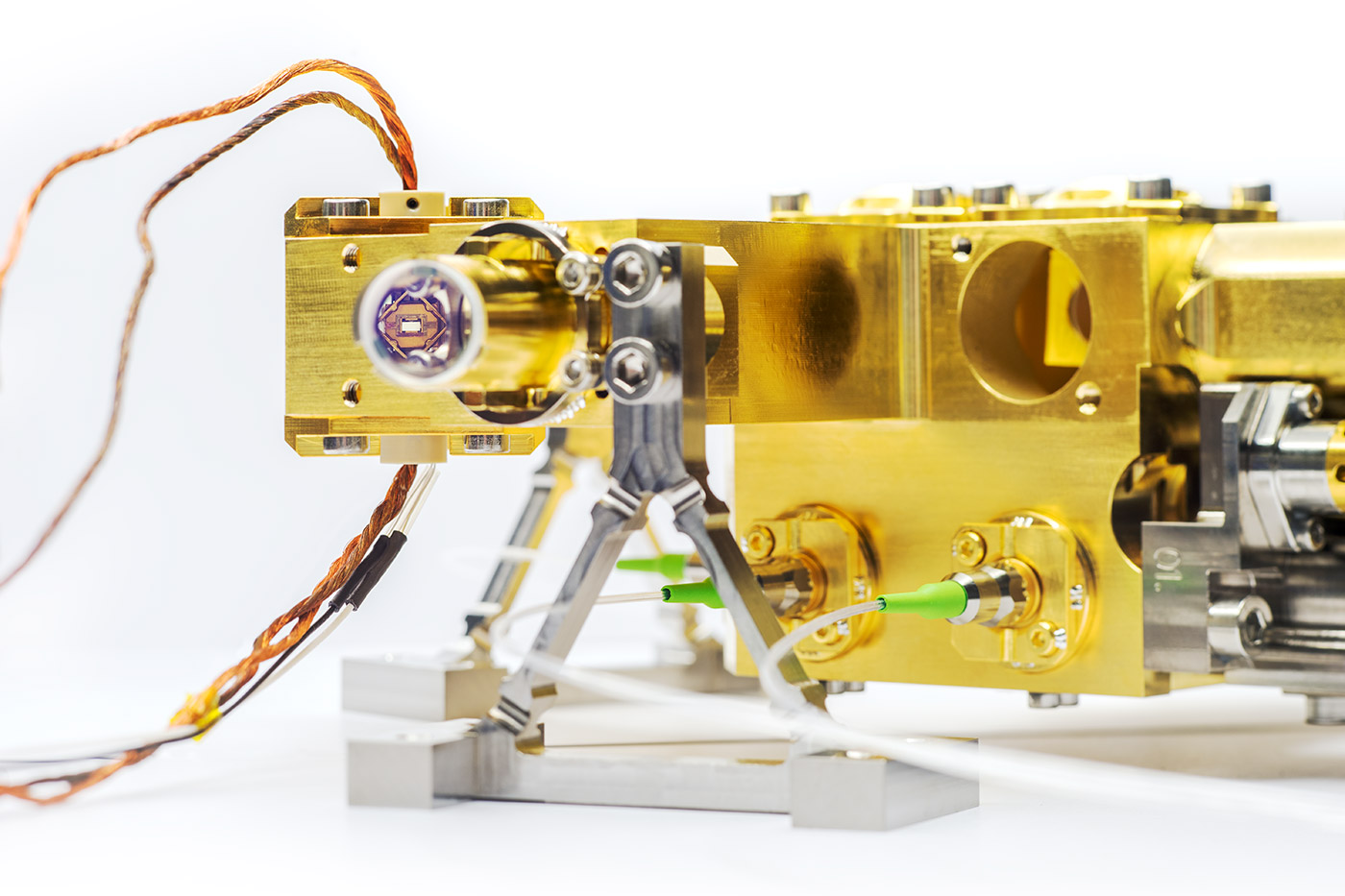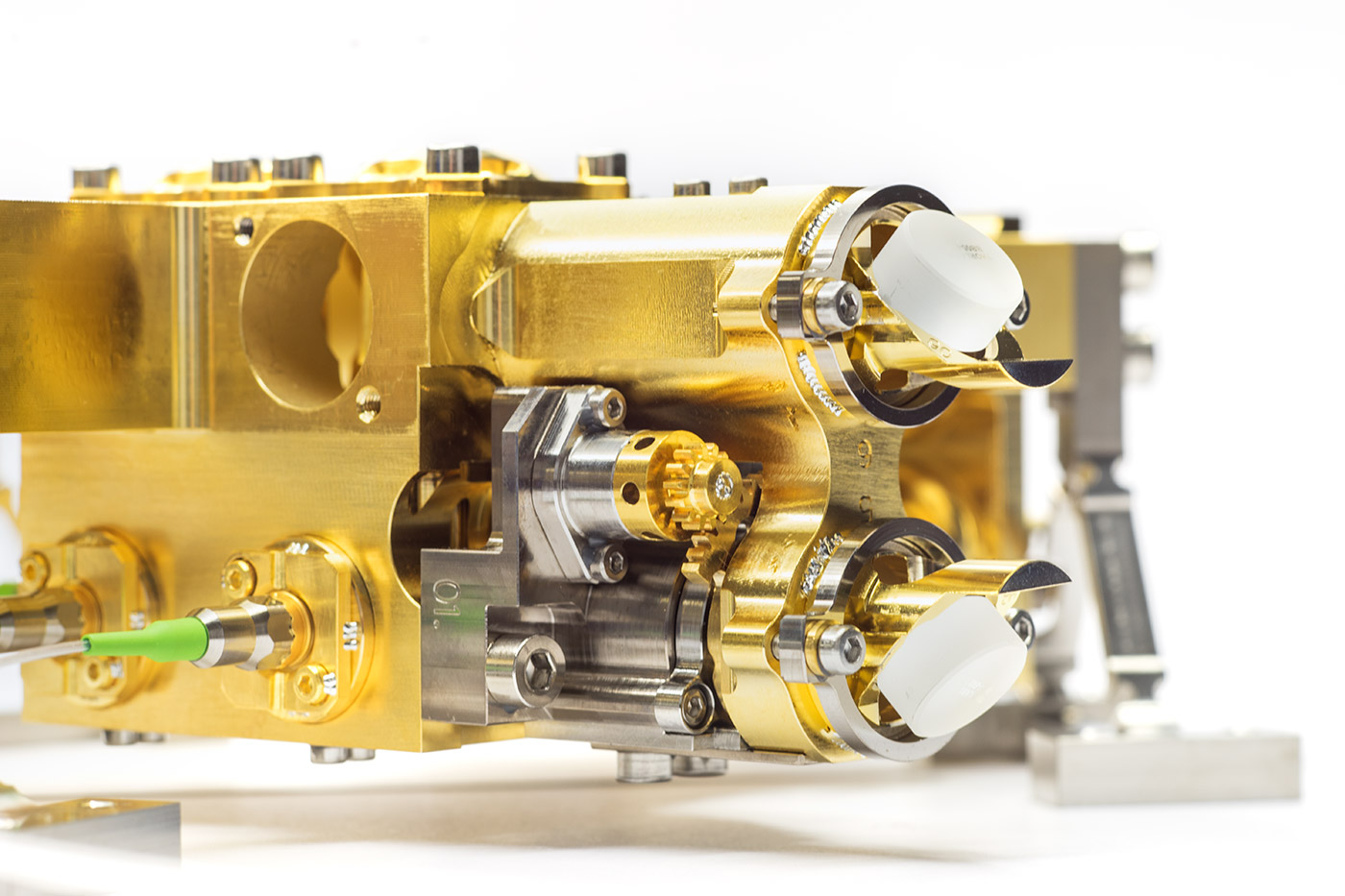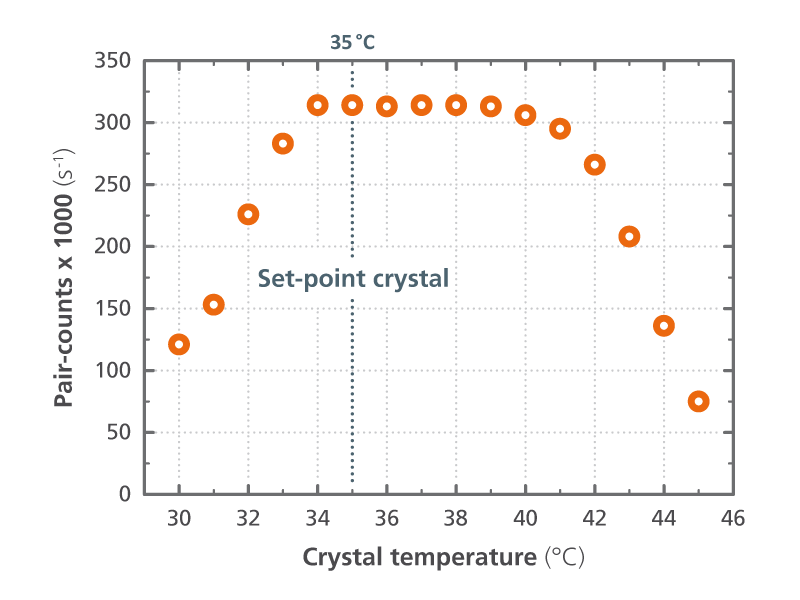Quantum communication enables the tap-proof exchange of keys for encoding security-relevant information. In contrast to algorithmic cryptography methods, whose security is guaranteed by the computing effort involved in decryption, the security of quantum cryptography is based on physical principles such as quantum entanglement or the superposition principle. Fraunhofer IOF is developing actively, together with partners in research and industry, quantum communication systems, which can be applied to existing fiber-networks as well as in terrestrial-free space links.
Long-term data security
The goal of the QuNET initiative is to develop the physical-technical fundamentals of quantum communication systems and optical link technologies for use in real infrastructure - targeted for application in high-security networks. R&D contributions of Fraunhofer IOF are supported by expertise and competence along the entire quantum photonic process chain. In addition to components and key technologies, overall systems for quantum communication in real free-beam and fiber network infrastructure are investigated and demonstrated.
Quantum communication experiment
In the first phase of the project QuNet a key experiment is conducted at the interface between quantum channels in different wavelength bands and transmission media: a necessary development for future integration into a heterogeneous network architecture. In a technology demonstrator, a secure connection between two buildings is made possible via an optical free-space link. Elementary building blocks of the demonstrator are reflective telescopes with precision optics for the optimized transmission of polarization-encoded quantum states, a polarization-entangled photon-pair source, and post-processing units, which include single-photon state analyzers and key management system to generate quantum keys.
The telescopes
Each of the telescopes is equipped with an active beam tracking system and they provide an aperture of 20 cm, which allow a free beam link. The entangled photon-pair source emits photon-pairs with a rate of up to 1 Million photons per second at a wavelength of 810 nm. A second source, which is non-degenerate and thus emits at 810 and 1550 nm, can be implemented to connect the optical free-space link to an optical fiber network. The detection system guarantees tap-proof communication between the endpoints using high time resolution and precise synchronization in the pico-second range.
The security of quantum communication in this case is based on the so-called BBM92 protocol for polarization-entangled photons.
